DePuy Spring Creek, (pronounced Dee – Pew), is a free flowing tributary of the Yellowstone River, originating from the the Yellowstone Aquifer. This is the same stream as Armstong Spring Creek, but the lower half, just before it dumps into the Yellowstone River. The DePuy portion of the spring creek is approximately 2.8 miles long, and is considered to be one of the best spring creeks in Montana, famous for prolific hatches and large trout. Located about 5 miles south of Livingston on Highway 89 South, DePuy’s has one of the most iconic and beautiful backdrops of any trout stream in the world. The Absaroka mountains, at over 12,000 feet tower over the creek and Paradise Valley.
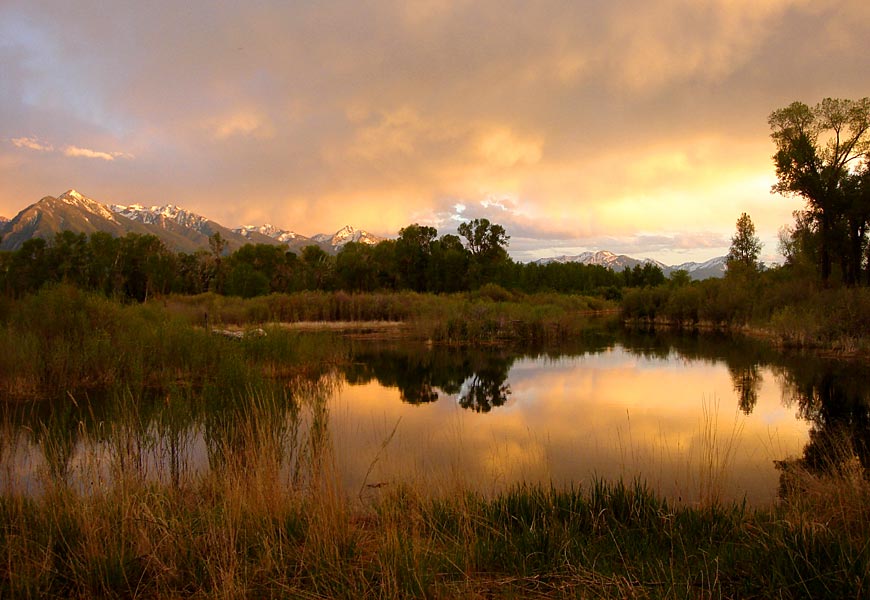
The cool, clear spring water of Depuy Spring Creek originates from springs located on the O’Hair ranch, approximately 1.3 miles south of DePuy’s southern property line. There are three main origins of the water: a large conspicuous spring located above the steam, many “channel springs” in the in the stream bed, and several marshes or high water table areas that seep into the creek. The channel springs are mostly located on the upper section of Armstrong’s and are identified by sediment lifting up off the bottom of the stream as ground water discharges from the acquirer, giving the stream a “boiling” appearance. The water temperature of course is much cooler, and flows anywhere between 48 – 54°F (8.9 – 12.1°C) year round.
In 1905 the DePuy family moved from Kansas to the Paradise Valley, where they purchased a small tract of land near the Yellowstone River. They made a living by farming and ranching sheep and cattle. Over the years, more land was acquired to create the current DePuy ranch property. Back in the 1950’s, Warren DePuy built an impressive fish hatchery that grew to be one of the largest fish hatcheries in the country for its time. The hatchery didn’t last long however, as the new highway was constructed over the old lanes, near the main entrance to the property today.
After the fish hatchery disappeared, Warren began construction on the magnificent white house that stands behind the main pond today. Although some locals have heard the inspiration for the house came from the movie “Gone with the Wind,” the idea actually came to Warren after reading books on travel, places, and history. In one of the books he saw photos of a beautiful southern edifice called the “Moss Mansion.”
When anglers check in they are often taken back by the spectacular Corinthian style pillars that are used both on the outside and inside of the house. The gorgeous stairway and traditional chandelier are equally impressive, as are the paintings and the eclectic collection of interior dectorations. In front of the house, Warren constructed two large wolf fountains. Behind the house he also created a picturesque waterfall and pond, which unfortunately were lost to the 200 year flood that swept thru the spring creek in 1996.
DePuy Spring Creek Rates
Like the other Paradise Valley spring creeks, the rod fee required to fish varies depending on the time of year. This sliding scale makes it more affordable to fish during the off season, especially during the winter, as DePuy’s is the only spring creek to offer a winter pass. If you purchased a winter pass and fished every day between October 15th – April 14th, it would only cost you $2.20 to fish per day! Of course, most anglers end up fishing around 10-15 days during the winter, picking and choosing the best days for successful fishing.

The most popular season to fish the spring creeks is in late June/early July, when the prolific PMD hatch is in progress. It can be very difficult to get on the creek this time of year. If you are serious about fishing on DePuy’s in late June through the middle of July, we suggest making rod reservations 1 or 2 years ahead of time. Yes, the fishing is that good. The main reason it is so busy this time of year is that anglers who have experienced the great dry fly fishing that occurs in this prime time, have a blast, and immediately “roll over” their dates for next year. A 50% deposit is required to secure your rods. To make your reservations you can either call us at the shop 406-222-7130, or call Theresa directly at 406-222-0221. You can also check out rod availability on their online calendar at depuyspringcreek.com. We also reserve several shop rods every year during the busy season. Shop rods are reserved for guided trips only but are welcome to whomever may call. You can also e-mail us anytime for details on availability.
Intense hatches of midges, spring baetis, caddis, two kinds of PMDs, sulphurs, and fall baetis come off throughout the year, making DePuy Spring Creek one of the best places in the world to fish for large trout with small dry flies.
During the late fall, baetis hatches taper off but midges keep coming off strong all winter and into the spring. Since midges are the main food source during these months, the trout really key in on them. A black midge larva pattern such as a zebra midge is a great fly to tie on if you are not sure what is working in the winter. Red midge larva are also very popular, followed by tan and olive. For midge dry flies, our favorite is one of René Harrop’s Hanging Midges, as it is easier to see the white tuft of CDC on top of the fly compared to other midge dries. A midge cluster or Griffith’s gnat also work well, and serve as a good indicator if you are fishing dry/dropper, by fishing a midge larva pattern under your dry fly.
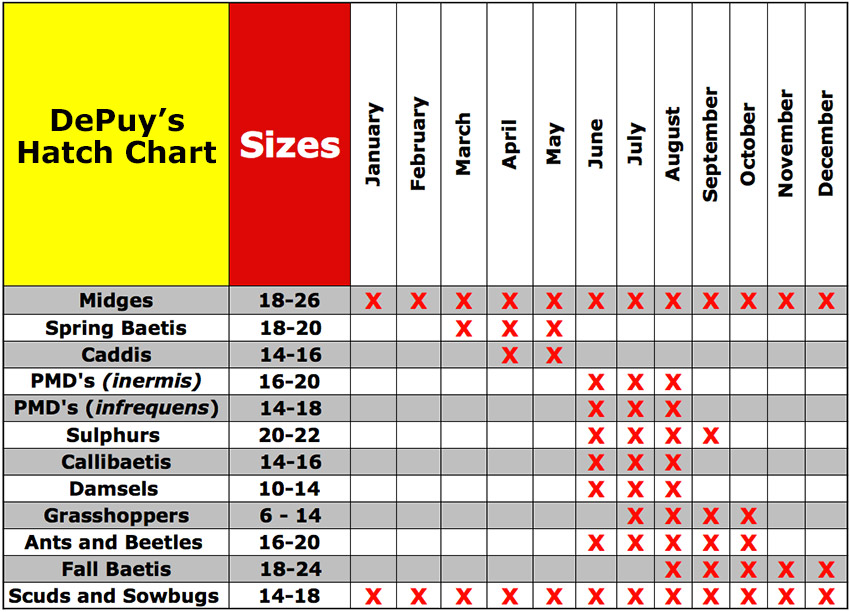
Spring baetis nymphs begin to work on the DePuy’s as early as late February. For the Baetis hatches to start, it seems as though air temperatures need to rise above 50 degrees, and it doesn’t hurt to have a cloudy day with little to no wind. Mid-March to late March is when the fish really seem to take notice, but these Baetis hatches continue on through the end of April. Later in the fall, baetis hatches will come again in October and November, although it is often more windy, which can blow these small mayflies off the water, making the fishing conditions more difficult.

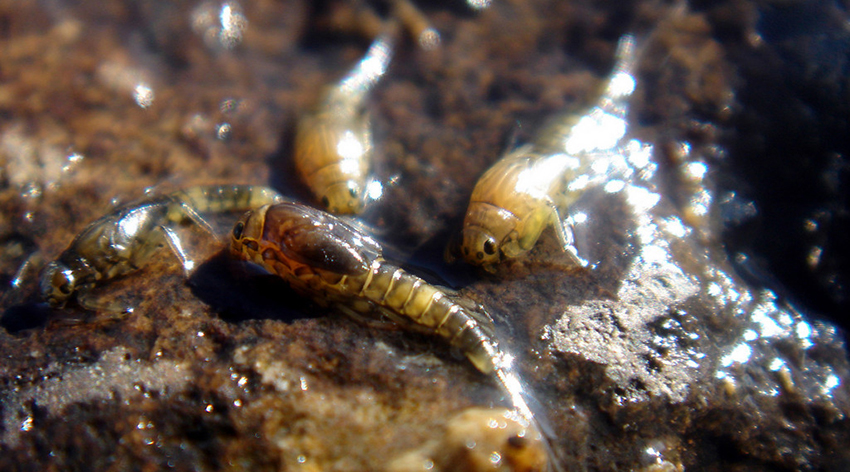
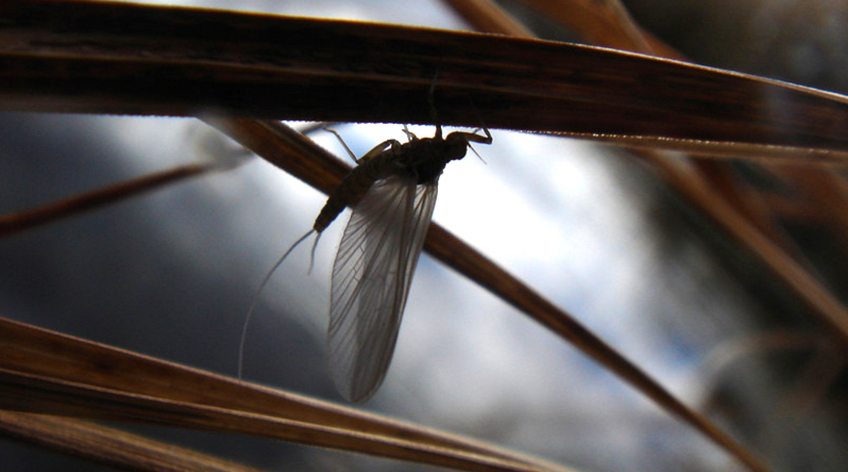
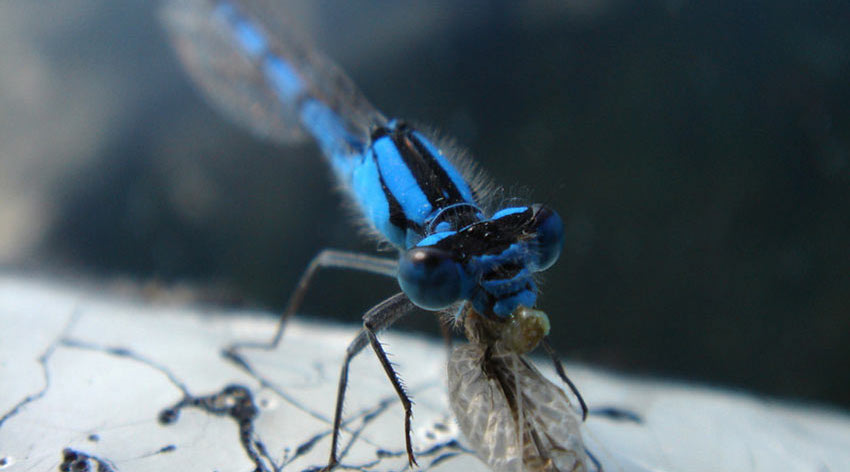
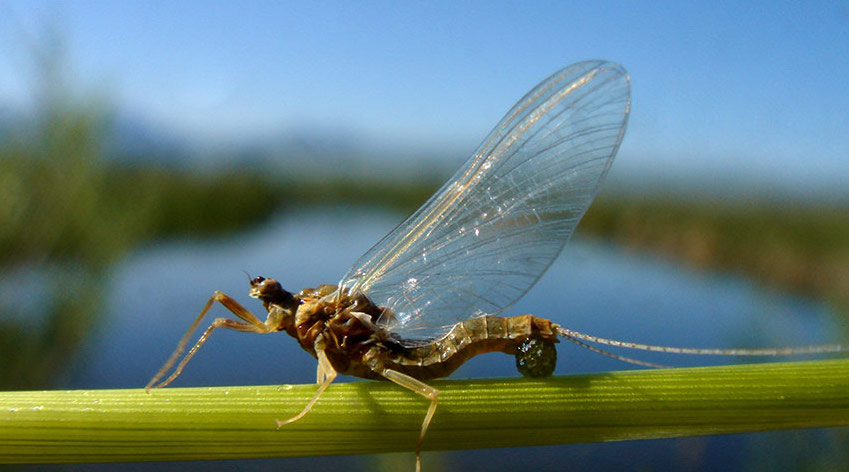
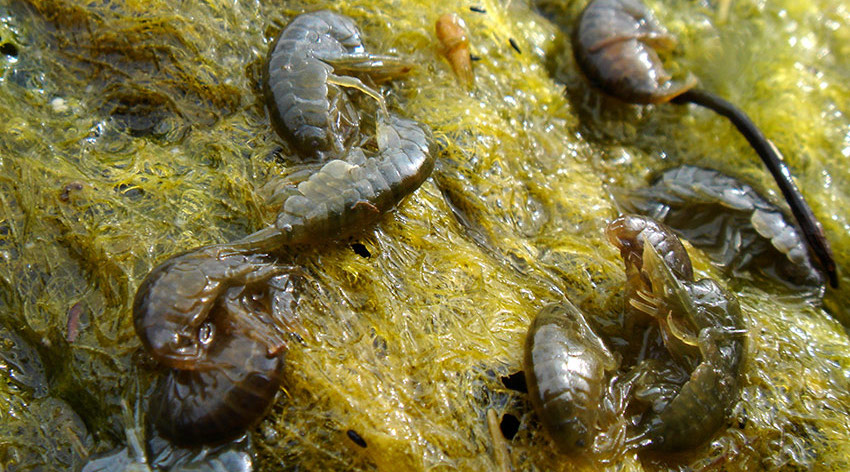
In late April as temperatures increase we’ll see caddis hatching on DePuy’s (as well as the Yellowstone River). Brachycentrus occidentalis, locally known as “Mother’s Day Caddis,” produces some red hot fishing on DePuy’s. You can differentiate fish eating caddis and caddis emergers as the rises are more splashy and energetic than when the fish are calmly sipping may flies like baetis, PMD’s, and sulphurs. At certain times of the day the fish will go into a feeding frenzy, even when the sun is out and shining bright. The fish are hyper focused on chasing caddis emergers and almost seem to forget predators and anglers, making the fishing exciting.
We’ve had some terrific days on the creek fishing with caddis, but you can also fish the Yellowstone River on the DePuy’s property during the caddis hatch, where you will find some nice rip-rap banks along with several big foam eddies that often hold rising fish.
Mid June through mid July is perhaps the best dry fly fishing on DePuy Spring Creek, with the occurrence of heavy PMD hatches. It is also the most popular time, so remember to book early! There are two types of PMD’s (pale morning duns) that hatch on DePuy’s. The first PMD’s of the year, Ephemerella infrequens, are larger in size, (#14-18) and typically emerger mid-June to early July. The second type of PMD’s, Ephemerella inermis, are smaller in size, (#16-20) and come off mid-July, continuing through August.
Spending a day on DePuy Spring Creek during the height of the PMD hatch is an experience that every angler deserves to try at least once. If you have never had the chance witness the PMD’s coming off on DePuy’s during late June through July, do yourself a favor and book a rod, even if it is for the following year. You will thank us later…
During the PMD hatch there is also a summer baetis the comes off in the late afternoon. Local slang refers to these light orangish/creamish mayflies as sulphurs. Sulphurs are much smaller than PMD’s, so you’ll want to buy or tie these in a size 20-24. Sulphur duns typically come off around 4-6 PM but you can fish with sulphur nymphs anytime of day during late July, August, and early September.
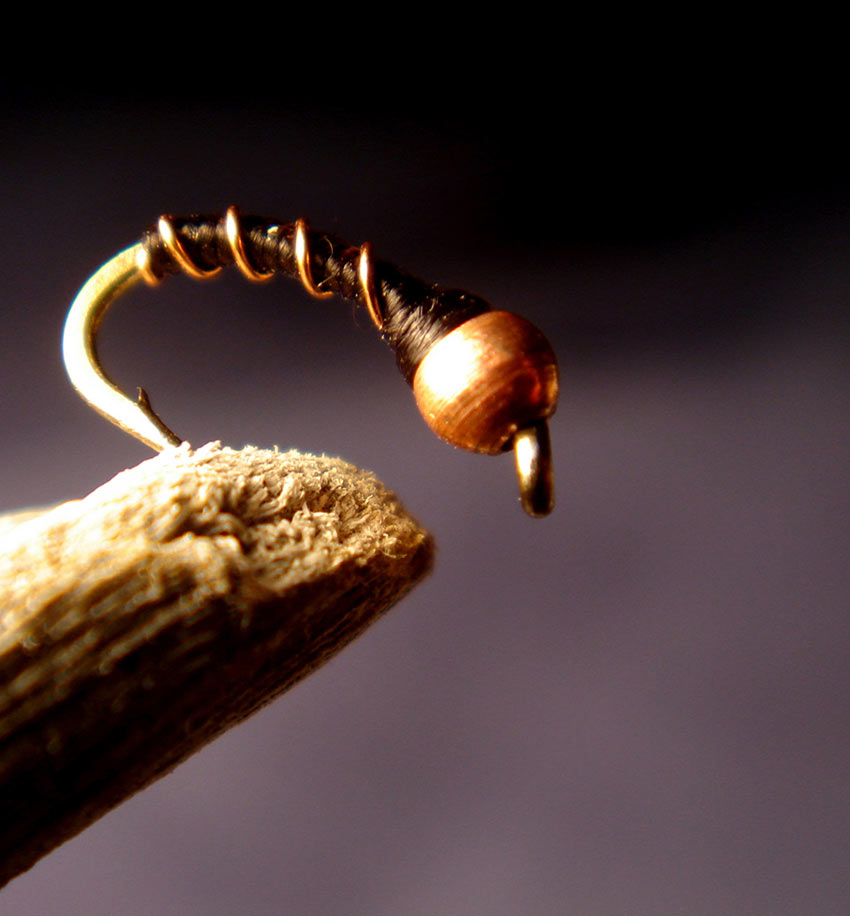
Callibaetis mayflies and damsel dries are also present during June, July, and August. These two hatches come off mostly on Dick’s pond and the upper pond, however, they have been seen in other sections of the creek as well. You can tell a callibaetis from a baetis because of their speckled wing tan body, and slightly larger size. We typically fish callibaetis in a size #14 – 16. For damsels, the nymphs seem to work year-round but, like the dries, they tend to work the best in the summer. Slowly stripping a damsel nymph in the pond will often elicit a strike and is something many anglers neglect to try.
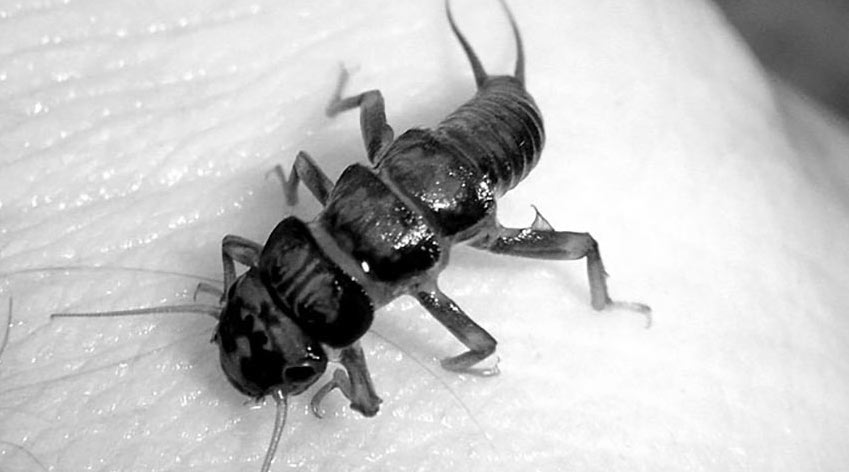
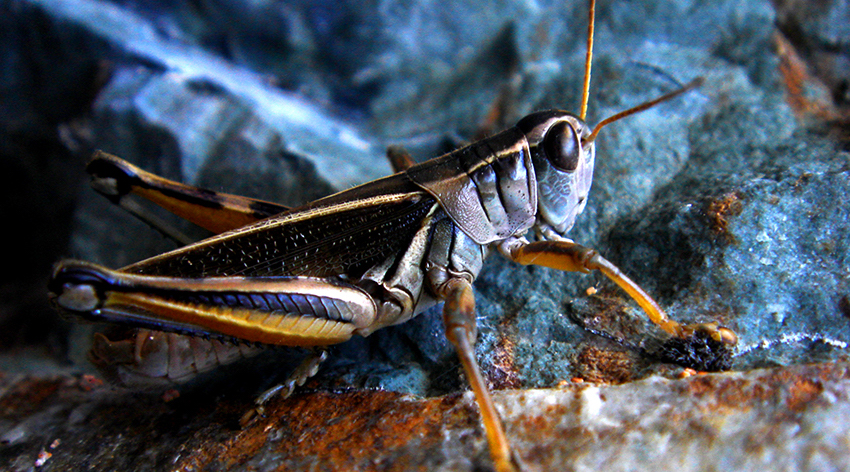
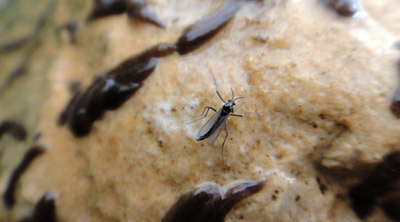
Aside from the prolific and predictable mayfly hatches on DePuy Spring Creek, there are also tons of scuds and sowbugs. Fishing one of these patterns is a good idea no matter what time of year it is as they are high in protein, and the fish are always looking for them. They will often work as good if not better than other nymphs. The scuds are olive/grey in color and range in size from 14-18. The sowbugs are more of a solid grey and are smaller in general, typically 18-20. If you don’t see much going on in terms of hatches, try nymph fishing one of these patterns and you will be glad you did.
DePuy Spring Creek is also home to many stoneflies, craneflies, sculpin, longnose dace, and leeches. Leeches are a favorite food source for trout in the main pond in front of the white house. Flip a few rocks at the pond’s edge and you are sure to find several juvenile leeches as well as some full-grown leeches. A black wooly bugger or leech pattern in size 10 up to 6 can provide some exciting fishing.
Terrestrials are also an important food source for the trout in DePuy Spring Creek. Hoppers, crickets and especially ants and beetles are some of the best dry fly patterns to fish when the hatch is slow or nothing appears to be emerging. In the middle section of DePuy’s you will find high grassy banks that are loaded with hoppers. The main months to try terrestrials are July, August, and September however they also work in June and even as late as October and November.
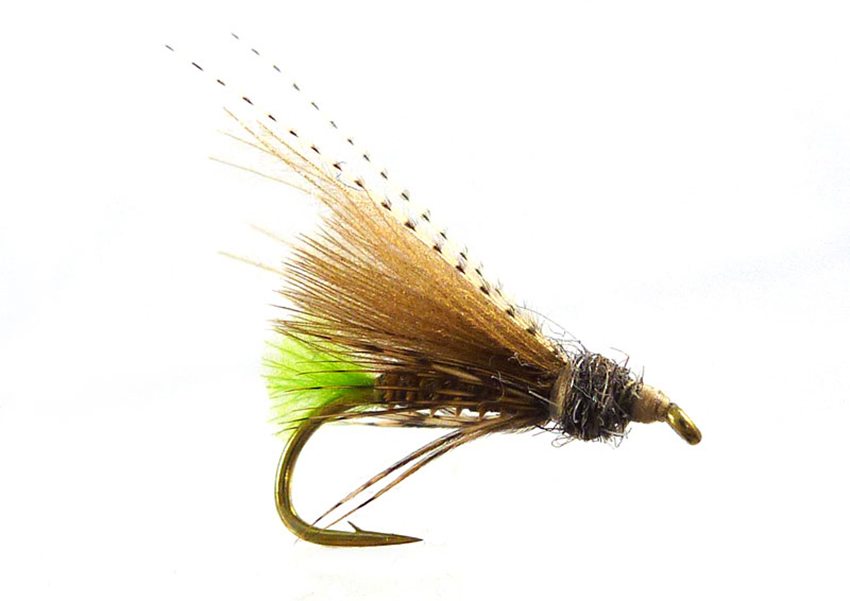

All the fish in DePuy Spring Creek are wild fish. Native Montana fish that are present in DePuy’s either as resident fish or that use DePuy’s as a spawning ground include: Yellowstone Cutthroat, (Oncorhynchus clarkii bouvieri), Mountain Whitefish, (Prosopium williamsoni), Longnose Suckers, (catostomus catostomus), Rocky Mountain Sculpin, (Cottus bondi), and Longnose Dace, (Rhinichthys cataractae). Non-native species include Brown Trout, (Salmo trutta), Rainbow Trout, (Oncorhynchus mykiss), and Cutbow Trout, (Oncorhynchus clarkii x mykiss) – which is a hybrid between rainbows and cutthroats.
One thing anglers always enjoy is how beautiful the fish at DePuy’s are. Each one is brilliantly colored, with vibrant spots and stripes. Every fish is unique and regardless of its size should be considered a trophy. Trout on DePuy’s average 12-16 inches, however several fish in the 18-22″ range get caught every season, (with plenty more that break off or getaway).
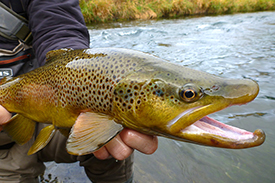
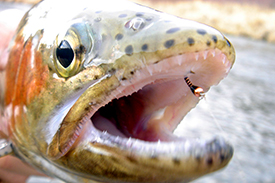

Since DePuy’s is a tributary to the Yellowstone, and there is nothing impeding fish from coming in and out, rainbows, browns, and cutthroats all run up into DePuy’s each year to spawn. We see some very large rainbows caught each spring and some very large brown trout caught in the fall. These big fish are typically caught in the lower section, where they spawn and then return to the Yellowstone. Impressive 28-30″ fish run into the stream each year and occasionally they do get caught. If you are hoping to catch huge Yellowstone river trout that come into the spring creeks to spawn, DePuy’s has historically produced the largest fish.
Every now and then we hear anglers talk about how the spring creeks are “too technical” or too difficult for a novice angler. This is not the case! While the spring creeks each present their own challenging fishing with micro currents and thin 6-7X tippet, our Montana fly fishing guides have always been able to get beginners into fish, even on their first day fishing the creeks. Since the 50’s, the Paradise Valley spring creeks have always drawn some of the best dry fly anglers in the world, however you don’t have to be an excellent angler to enjoy a day and catch a few fish on one of the prettiest streams in Montana. Come join us and see how fun it can be!

Equally as impressive as DePuy’s world-class dry fly fishing is the spectacular sight fishing found on the property. With a good pair of polarized sunglasses, it is easy to look down into DePuy’s gin clear water and see larger fish feeding on nymphs. Depending on the season the fish will be focusing on baetis, PMD’s, and sulphur nymphs, but they always seem to eat midge larva any time of year. A zebra midge is often a good way to go if you are not sure what to tie on.
On all the spring creeks, de-barbed or barbless hooks are encouraged. Fishing with bait or traditional spin gear, like rapalas or lures is not permitted on the creeks. All fishing is catch and release. Even though you will be fishing on private property, since Yellowstone river fish can get in and out of the spring creeks freely, a Montana fishing license is required.
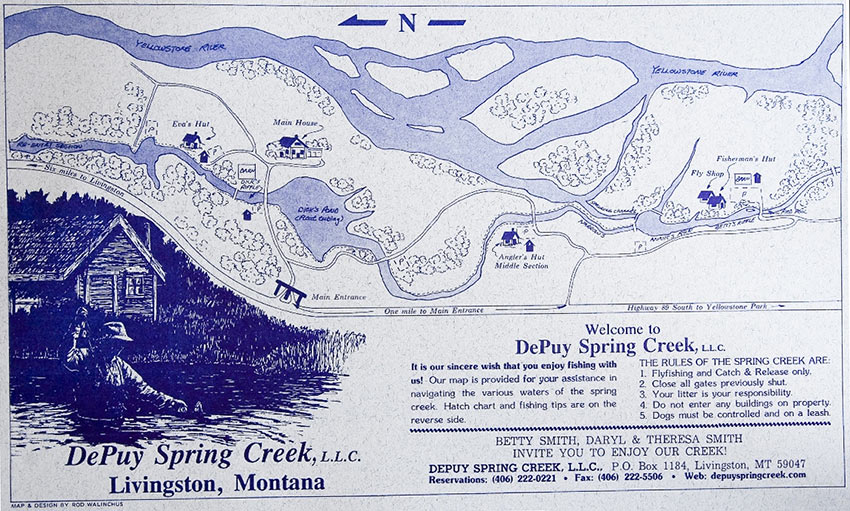
The first time you fish DePuy’s we highly suggest you get a guide, even if you are an expert angler. The knowledge you’ll gain will immediately increase your chances of doing well on the creeks and a lot of it has to do with proper observation, approach, and execution. Booking one of our Montana fly fishing guides will not only insure that you’ll be more successful on the spring creeks, but the guides will teach you techniques to improve your fishing that you can apply to other streams you fish.
It’s always fun learning something new, and you will have a great time. You will enjoy the spectacular views of the Absaroka mountains while your guide fixes your tangles, ties on a tippet for you, and picks out the exact right fly. This allows you to avoid frustration, completely relax and enjoy the day. Not to mention, it is nice to have an excellent lunch prepared by our guides. Do yourself a favor and book at guide by calling us at 406-222-7130 or you can also e-mail us for availability.
The upper portion of DePuy’s has some fantastic fishing and is often overlooked by many guides and anglers. The upper section consists of the upper pond and slough, (just above the narrows culvert), Annie’s Run, Betty’s Riffle, the PhD pool, and continues just past a final culvert on the southern end before running into the Armstrong Spring Creek border fence.
Not only are there some large fish in this section, but many of them are actively looking to rise for flies on the surface. The PhD pool holds some very large fish and is considered to be one of the best, yet most challenging holes on the creek. A long down-and-across cast and equally long, flawless drift are required here. If you are fishing just the right PMD or Baetis, during the hatches, it is often your drift, not the fly that needs to change in order to fool these smart hogs. Plan on fishing 6-7X tippet as the PhD pool is flat, slower water. The culvert at the lower end sucks in water, creating micro currents that make it difficult to get that perfect dead drift. They don’t call this the PhD pool for nothing!

Betty’s Riffle is another great spot to fish. To some degree, it is easier than other spots because the water is moving faster, (and hides drag drifts better than the slower, glassier water). A plethora of bugs live here; it is a great place to take samples if you brought your insect net. The culvert hole above Betty’s Riffle is also worth a look and can hold big fish from time to time. There is fisherman’s hut located next to Betty’s riffle and Buzz’s fly shop, as well as a big hanging hammock in the summer. The fisherman’s hut is fully stocked in the winter with wood and is the perfect place to eat lunch or warm up your hands before heading back out to fish.
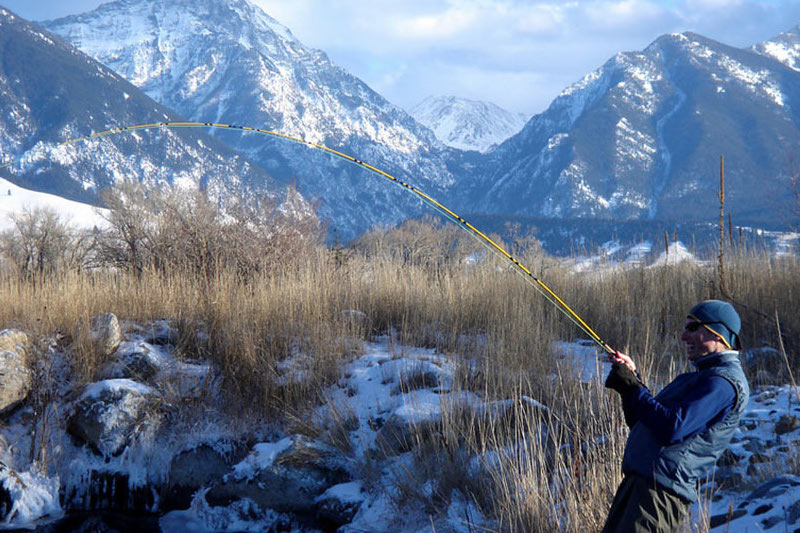
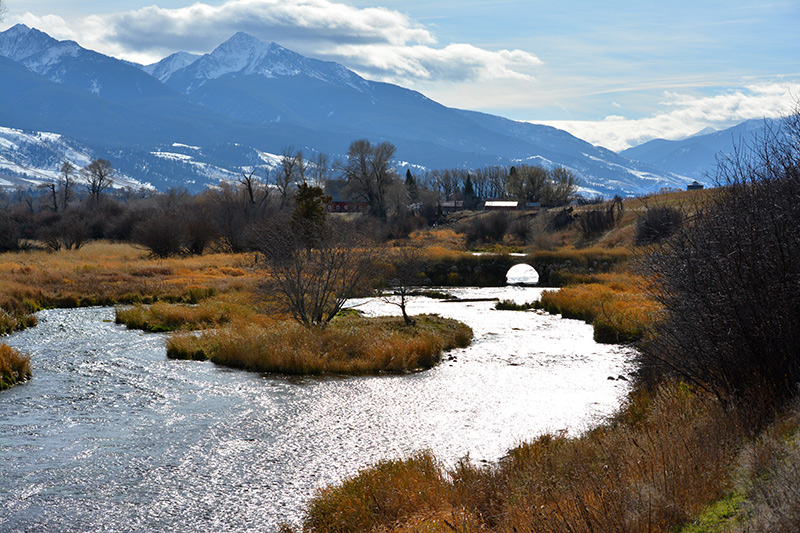
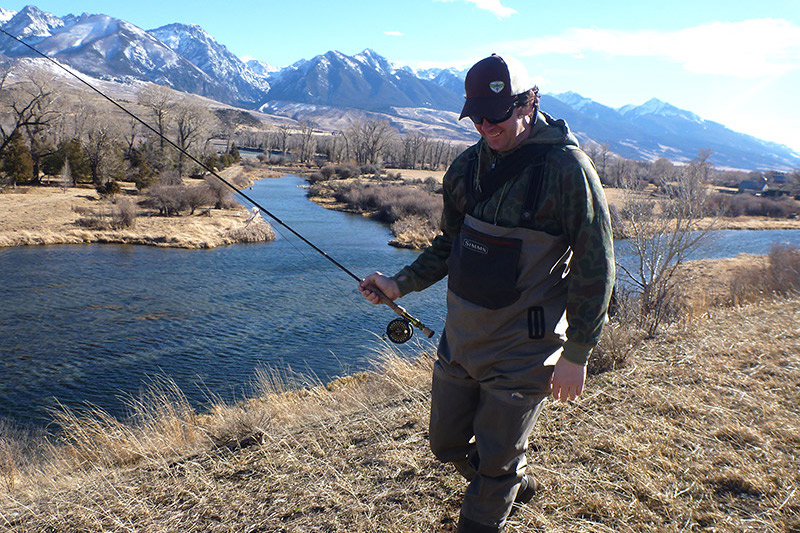
Annie’s run and the upper pond also hold some large fish. The flow in this section is very slow and fairly deep in spots. Throwing a small leech pattern here can be deadly at times, especially close to dark. It can get mossy here in the late summer and early fall, making the fishing difficult if not impossible, but the spring, early summer, and winter are generally clear of moss. The fish here can also be spooky, so a long cast will help. You might also want to kneel down here while casting to reduce your silhouette with the skyline.
From the Dick’s Pond (the main pond in front of the white house) up to the Narrows is considered the middle section of DePuy Spring Creek. There are parts of the middle section that are quite popular, (usually those spots closest to parking areas), while other sections, which require more walking, see a lot less traffic and fishing pressure.
The middle section has some very deep holes as well as some very large fish in it. Most anglers choose to fish dries, especially in the narrows and near the Angler’s hut, however the nymph fishing in this section can be amazing. Look for the large foam eddies, which collect foam but also collect food. There are also some great undercut banks and culverts in this area that tend to hold big fish.
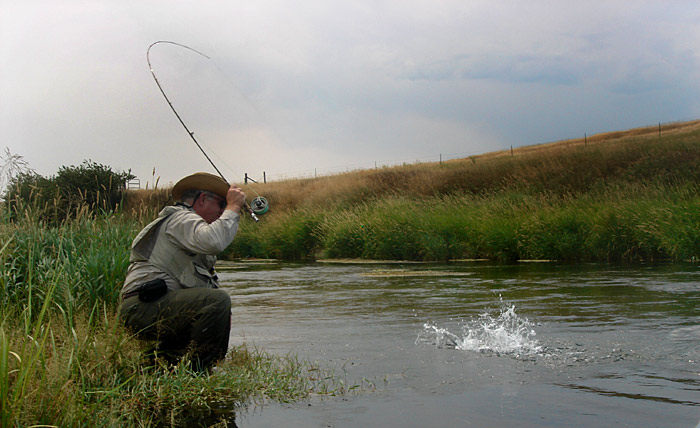
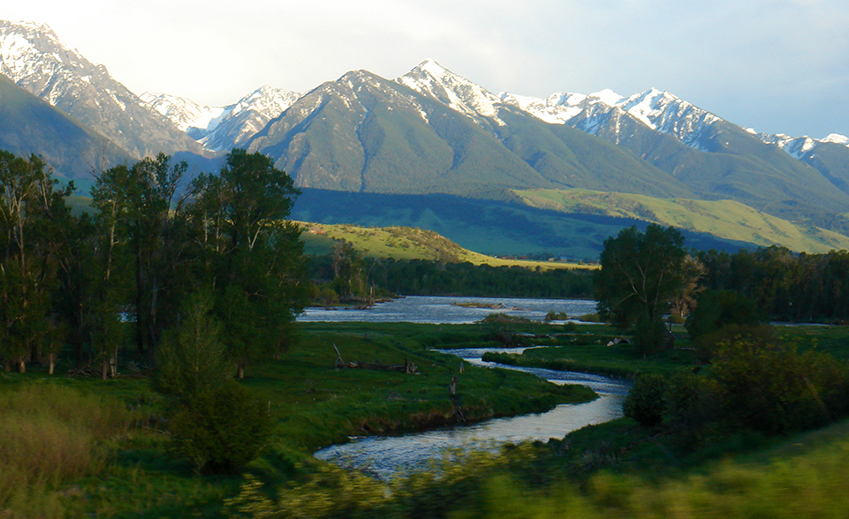
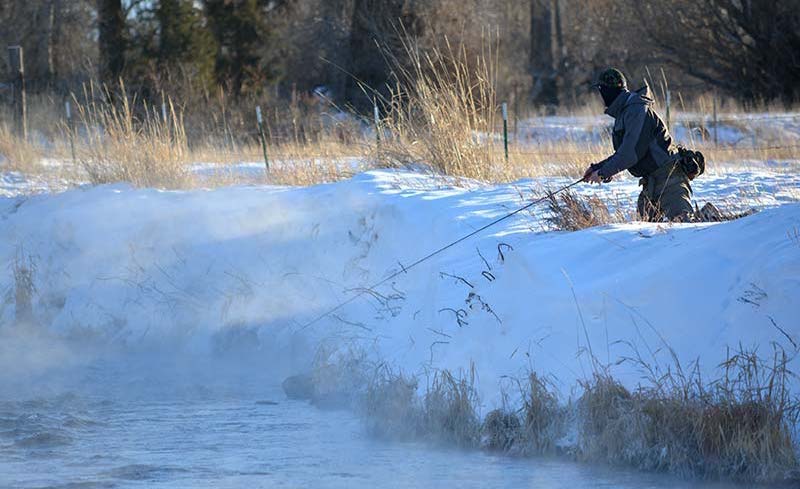
The middle section is also closer to the Yellowstone river than other sections. Although 99% of anglers spend their time on the spring creek, DePuy’s also allows bank angling along the Yellowstone. Much of the bank in along DePuy’s is rip-rap (large positioned bounders) that protect the spring creek from the river cutting through like it did in the flood in 1996. This rip-rap can be some fun streamer fishing, but the best time to try the river is during late April/early May when the Mother’s Day caddis are coming off.
Dick’s Pond is the body of water in front of the main house. Although most people choose to fish the creek when they go to DePuy’s, the pond should not be overlooked. It holds mostly browns, in the 10-15 inch range, however one year an 8-pound brown was caught in the pond! One winter, we saw a 24″ rainbow, sunning himself in the middle of the pond. After fishing small dries and nymphs on the creek, fishing the pond is a welcome opportunity to tie on a wooly bugger or leech pattern, step up in tippet size to 4X or larger, and catch a few beautiful big trout.

You have to be a little careful wading in the pond as the silt builds up from the waterfowl, making it hard to wade through the muck, and borderline dangerous depending on how far out you go. If you are careful, you can wade along the edges of the pond and fish water that rarely gets fished. Some guides have been known to launch a boat on the pond, which eliminates the trouble of walking around in the muck and also elevates the angler so they may spot cruising fish better. You can also use a float tube or kick boat here. The best way to get them? Callibaetis, scuds, damsels, and leeches.
From the waterfall outlet of Dick’s pond down to the confluence of the Yellowstone is considered lower DePuy’s. This section is most popular during the spring and the fall as rainbows and browns will move in to spawn. During the spring, cones are set up designating which areas no fishing is allowed, in order to let the native Yellowstone cutthroat, (and rainbows) spawn unmolested. The cones are not set up in the fall, however.
The lower section of DePuy’s has become a favorite of many anglers. For one, the riffles in this area create a lot of oxygen. The riffles also move enough water over the rocks that silt never settles. These riffles are the perfect habitat for mayfly nymphs making it easier for baetis, PMD’s, and sulphurs to survive and crawl around (and under) the rocks before hatching. These riffles are also easy fishing as the faster water hides flaws in your drift, plus the fish have to make a quick decision on whether or not they want to eat your fly.
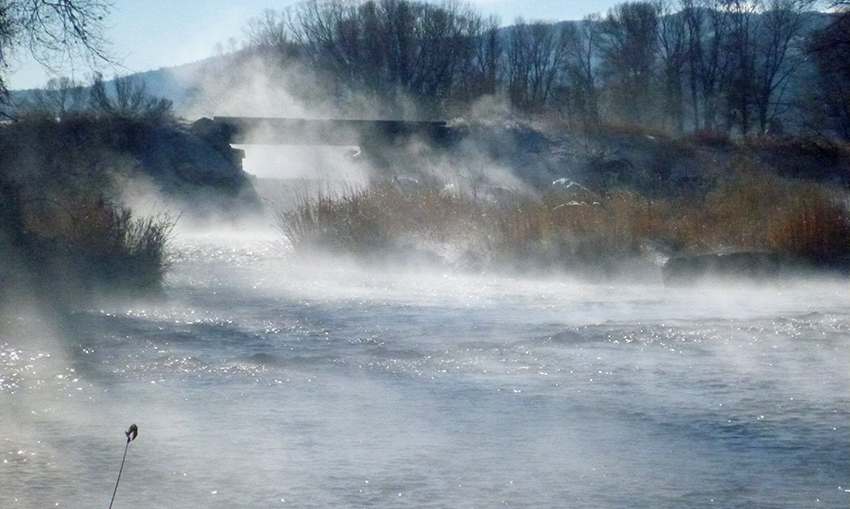
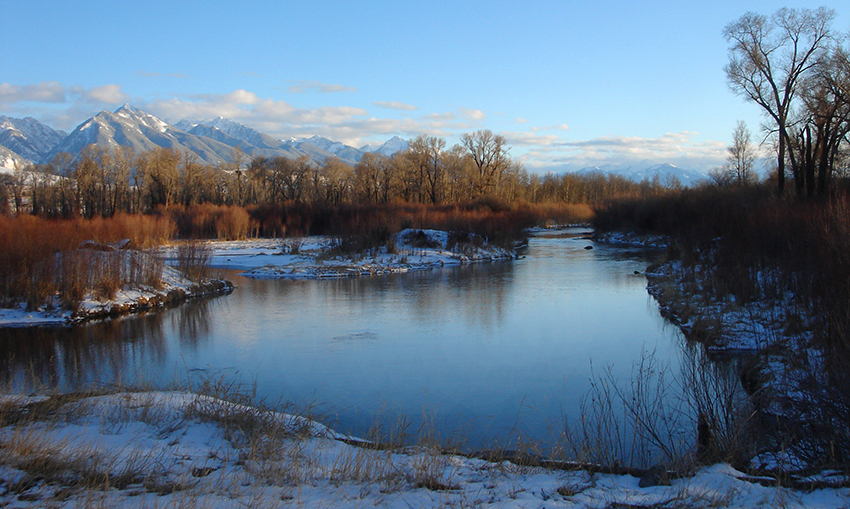
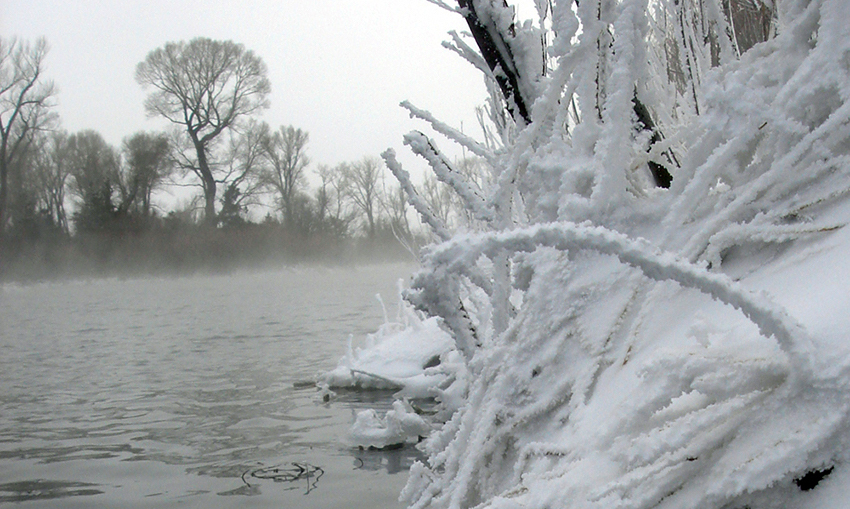
There are a couple of spots, especially from Eva’s hut down and also at the lower end of the stream that are slower water. Silt does build up in this slower water and these areas often fish better with midges and midge larva and pupa, which adapt well to the silted bottom. We have done especially well in these slower water sections in the winter. As long as the wind is not blowing too hard fish will be up, sipping midge dries. If it is bright or windy the best bet is to fish with midge larva patterns or egg patterns, (or an orange scud if you prefer).
During the hot summer months of August and early September, the cool spring water in DePuy Spring Creek is much colder than the water in the Yellowstone River. It is not uncommon to see many river fish in the creeks during this time, especially on low water years when water temps in the Yellowstone can reach 65-70°F.
One thing DePuy Spring Creek has going for it over Armstrong’s and Nelson’s is that they have three warming huts on the property: Eva’s Hut, the Angler’s Hut, and the Fisherman’s Hut. Sure, you can always take a break inside your car to warm up, but nothing beats coming in out of the cold and warming up with a small fire. Each hut has a metal stove, tables for lunch, and wood that Daryl keeps fully stocked during the winter months.
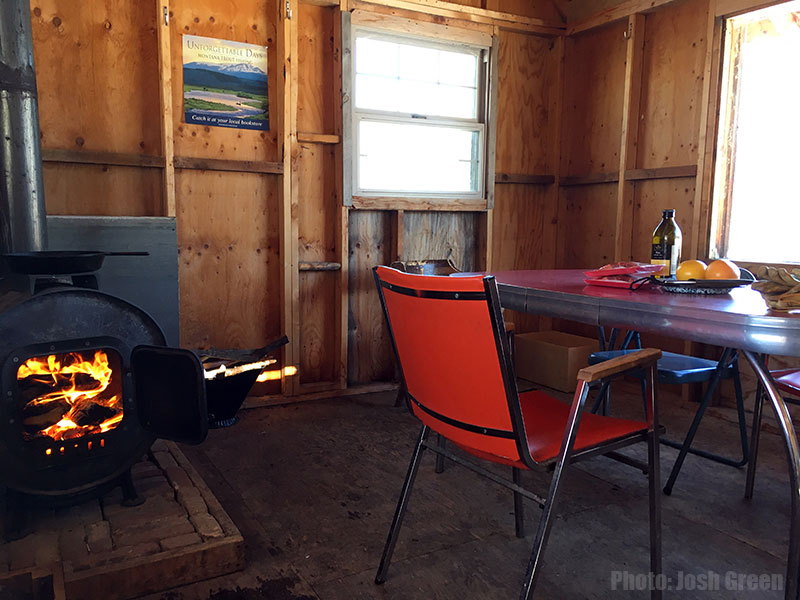
The best rod to bring to the spring creeks is a 3-weight or a 4-weight. A 3 or 4-weight rod will not only make a more accurate and delicate presentation than a 5-weight or 6-weight rod, but the thinner line also allows you to make more delicate presentations and get a better drift. In addition to a more flawless drift, a 3 or 4-weight rod does a better job protecting light 6X and 7X tippets.
Some of our favorite rods for the spring creeks include the Sage 389 LL, the G.Loomis NRX LP 8’8″#3, the G.Loomis NRX LP 9 ‘#4, the Tom Morgan Rodsmiths 8’#4, the Hardy Zephrus 8’6″#4, the Winston BIIIx 8’6″#4, and the Winston BIII LS 8’6″#3. All of these rods have fantastic feel and would be the perfect tool to have in your hands at any of the spring creeks.
You can also check out our 4-weight shootout to have a look at other 4-weight rods.
A standard click pawl reel works very well and our favorites are the Ross Colorado LT and Galvan Brookie. These are reels you must palm to apply more drag pressure. Most anglers prefer a light reel with a smooth, adjustable drag. The trout here do not run very far, (although the may take you into log jams, weeds, or rocks to break you off). One of our favorite freshwater reels is the Galvan Torque. They are light yet durable and have one of the widest ranges of drag of any reel on the market. This means you can really dial in your drag for 5X to 7X tippets.
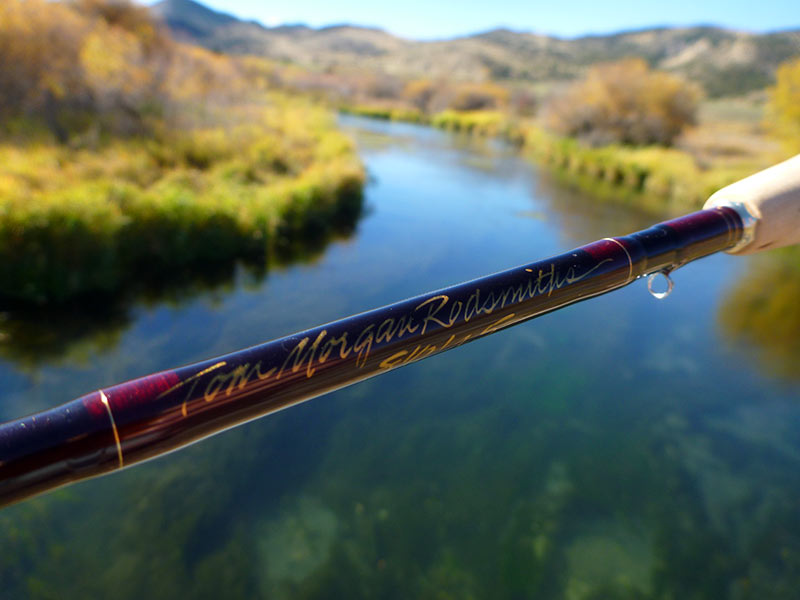

Check out the 5 weight Reel Shootout to see why the Galvan Torque won. Of course, for a 3 or 4 weight rod you’d want to get a T-3 or T-4 size instead of the T-5.
For lines, you can choose to fish either double taper lines or weight forward lines. Many people like the feel of a double taper line on the softer rods listed above (the Sage LL, Tom Morgan, and Winston rods) and a weight forward line on the faster rods listed above (the G.Loomis NRX LP’s and Hardy Zephrus). While some anglers may tell you only a drab color line like olive or dark grey will work better on the spring creeks, we know from experience that bright optic green lines and even bright orange lines work as well, especially when you are using long 12-foot leaders. For double taper lines we like the 406 DT fly lines. For weight forward lines our favorite is the Scientific Anglers Mastery Trout lines.
We are fortunate to be one of three fly shops in the US to carry René Harrop patterns, tied by them personally. These flies, whether you choose a nymph, short wing emerger, sparkle dun, comparadun, no hackle, or spent spinner, are the highest quality flies you’ll find anywhere in the world. Each fly is shadow box quality and more durable than the typical import flies. Many customers who are unfamiliar with these amazing flies raise their eyebrows at the $3.95 per fly price tag, but they are worth every penny. Those in the know buy as many as they can while we still have them in stock, since we are very limited in the number we can offer for sale each year.

Again, we highly recommend getting a guide your first couple times fishing the spring creeks, but if you would rather try fishing on your own, stop by the shop and we can get you a map as well as a few of the flies that are working for that time. We are always happy to help anglers pick out the right flies, and we will take the extra time needed to get you set up right to insure you have a fun and productive day on the water.
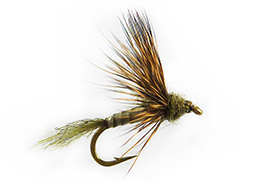
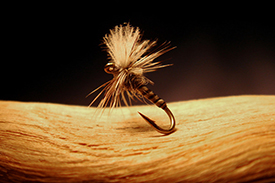
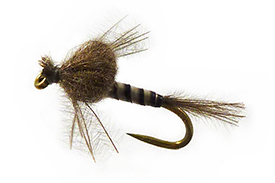
During the winter fishing nymphs, leeches or streamers you can often get away with 4X tippet. When insect hatches are occurring – spring through the end of September, you’ll need to go down to 5X, 6X and even 7X to get better drag-free presentations. We know some anglers who even fish 8X, however many of these fish hooked are lost in the weeds and with a fly still set in their mandible. Most of the time strong 6X and 7X fluorocarbon tippets are the way to go. We don’t encourage using 8X as it takes most anglers too long to land the fish, which can have a negative effect on its survival.
Since the spring creeks are so clear, we prefer to use fluorocarbon tippet rather than monofilament tippet. Yes, they are more expensive, but they are more invisible underwater. TroutHunter or Seaguar GrandMax are our two favorite brands for fluorocarbon because they are extruded with a double structure fluorocarbon. The inner fluorocarbon is very stiff and gives you your tensile strength while the outer fluorocarbon is softer, allowing you to tie better knots then don’t cut through mono or into the fluorocarbon itself. For more information on tippet check out our Tippet Shootout.
For leaders, we recommend either a standard 12′ 6X Rio knotless leader or better yet one of our Yellowstone Angler hand-tied 12′ 6X leaders. These are tied with nylon tippets, but we have found that using a fluorocarbon tippet like Trouthunter works even better. Using two to three feet of fluorocarbon tippet allows for better presentations, getting the fly and tippet to move more freely with the tiny micro-currents we often find on the spring creeks, giving you a better drag-free drift.
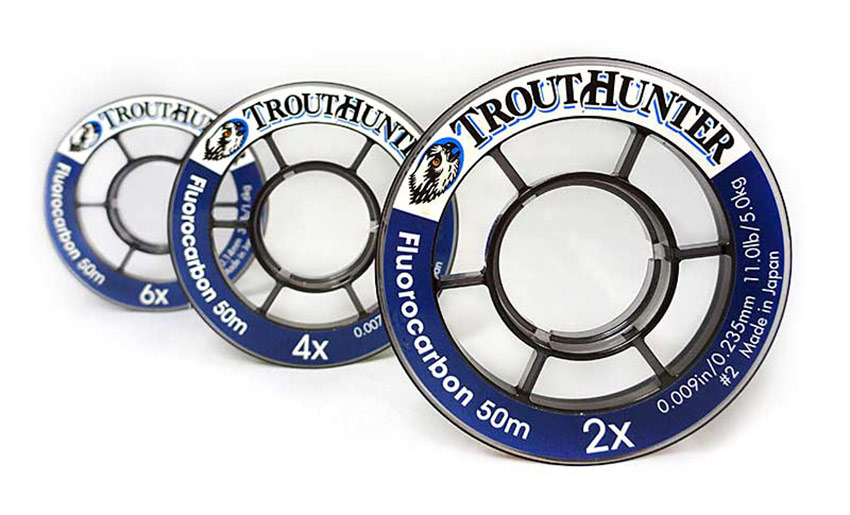
If you plan to use three feet of fluorocarbon 6X tippet, yet have a 12-foot leader, the easy way to do this is to buy a 9′ 5X monofilament (co-polymer) leader, then add in the 3 feet of fluorocarbon tippet, ending up with a 12-foot leader. Expert casters may be able to handle even longer leaders in the 14 – 16 foot range. Once your tippet decreases to below 15-20 inches, (from changing flies or a break-off) you should take the time to tie in another 36″ section of tippet in order to get a better drift.
In the cold water of the spring creeks, most anglers choose to wear waders, even during the middle of the summer. Younger anglers or those with thick skin might choose to wet wade on a hot summer day. Typically you will only be standing in knee-deep water, but occasionally, especially when crossing the stream, you might find yourself wading beyond your waistline. If you did not bring waders with you, we offer wader and boot rentals at the shop.
A good pair of felt or Vibram sole boots are the key to safe wading at the spring creeks. The rocks can be very slippery, especially in the late summer and fall. Older anglers may feel more comfortable fishing with a wading staff.
As always, be sure to clean and dry your boots and waders the best you can when going from one watershed to the next. Even if you are on the Yellowstone one day, and the creeks the next, it is best to wash your wading gear in order to avoid the spread of ANS (Aquatic Nuisance Species).
We encourage anglers to bring along a landing net. This will allow you to land the fish faster as well as provide a safe spot for the fish while you take the fly out. The best nets of today have a rubber bag rather than a cloth bag. These rubber nets also take less fish slime off of the fish (and also won’t smell later in your car). You can choose a net sits on the back of your vest, or you can choose a longer net that also doubles as a wading staff. The advantage of a smaller landing net is that it is always ready. Most anglers will connect these to their vest or jacket with a magnet, to make the quick release and re-docking easier. Some of our favorite nets are by Fishpond. These nets are made from carbon fiber and will never break. They also use some of the best lightweight softer rubber netting.
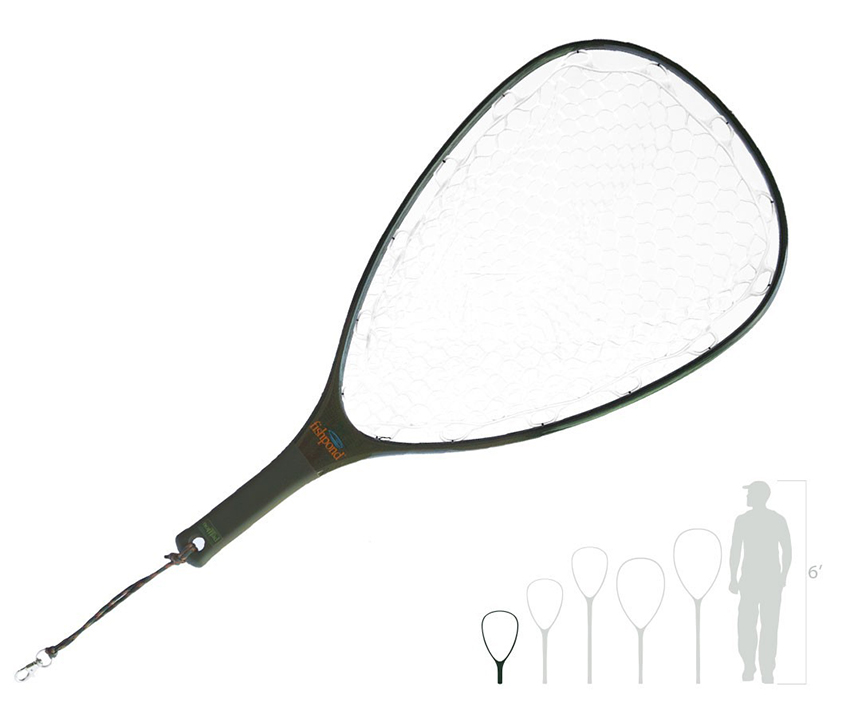
These may seem obvious to most anglers, but having a good pair of polarized glasses and a hat with a brim to block the sun is often the difference between seeing the fish and not seeing the fish. For lenses, we like copper, brown or amber-colored lenses best, as they give you more contrast and make it easier to spot fish than grey or other colored lenses. On the high end, brands like Costa, Smith, and Maui Jim offer some of the best optics. Many of the best sunglasses sell for more than $200, but for a serious angler, they are worth their weight in gold. We also stock and sell a lot of Suncloud polarized glasses in the $50 range, as well as Fisherman Eyewear glasses that range in price from $15-$30.
Since fish the Yellowstone river can freely enter and leave DePuy’s Spring Creek, a Montana Fishing license is required by law. You can purchase one at the Yellowstone Angler (or anywhere else that sells Montana fishing licenses). You can also purchase one online here.